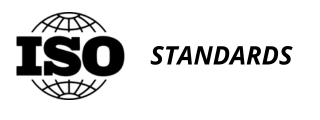In the realm of organizational management, defining objectives is not just a task; it’s a critical foundation for success. The importance of this process cannot be overstated, as it aligns the organization’s efforts with its ultimate goals and aspirations. A well-crafted objective acts as a guiding star, ensuring that every action and decision contributes to the overarching aim. But how do we ensure these objectives are both effective and achievable? This is where the concept of SMART objectives and the guidelines of the ISO 9001:2015 standard come into play.
SMART Objectives: A Brief Overview
The SMART framework is a widely acknowledged approach to goal setting. SMART stands for Specific, Measurable, Achievable, Relevant, and Time-bound. These criteria transform vague aspirations into concrete targets:
- Specific: Objectives should be clear and concise.
- Measurable: There should be a way to assess progress.
- Achievable: Goals must be realistic and attainable.
- Relevant: Objectives should align with broader goals.
- Time-bound: A clear timeline is essential.
By adhering to these principles, organizations can set objectives that are not only clear and well-defined but also more likely to be accomplished.
Delving into ISO 9001:2015 Standard – Clause 6.2
ISO 9001:2015, a globally recognized quality management system standard, emphasizes the significance of quality objectives in its Section 6.2. This clause stipulates that objectives must be:
- Consistent with the Organisation’s Scope and Quality Commitment: This means aligning objectives with the overall business model and the commitment to quality. It ensures that the objectives support the core operations and values of the organization.
- Measurable and Relevant to Functions and Levels: To be effective, objectives should be quantifiable and pertinent to different areas and hierarchies within the organization. This fosters a cohesive effort towards quality across all departments.
- Realistically Achievable: Setting practical and attainable goals is crucial. Over-ambitious objectives may look good on paper but often fail to materialize in reality, leading to disappointment and demotivation.
- Aligned with the Organisation’s Quality Policy: The objectives should not only comply with but also reinforce the quality policy, which is the cornerstone of the quality management system.
- Relevant to Product Conformity and Customer Satisfaction: Objectives must contribute to the overall goal of meeting product standards and enhancing customer satisfaction, which is the end goal of any quality management system.
- Subject to Monitoring and Measurement: Continual monitoring and measuring of objectives is imperative to assess their effectiveness and ensure they are serving their intended purpose.
- Integrated into the Management Review Process: Quality objectives should be a part of the management review, ensuring ongoing evaluation and alignment with organizational strategies.
- Clearly Communicated Within the Organisation: For objectives to be effective, they must be clearly understood by everyone involved. This ensures that all members of the organization are aligned and committed to achieving these goals.
- Well-Planned for Effective Achievement: Detailed planning regarding the actions, resources, responsibilities, timelines, and evaluation methods is essential for the successful attainment of each objective.
In conclusion, setting and achieving quality objectives is not just a compliance activity but a strategic initiative that propels organizations towards excellence. By aligning with the SMART criteria and adhering to the comprehensive guidelines of ISO 9001:2015’s Clause 6.2, organizations can ensure that their objectives are not only well-defined and achievable but also instrumental in driving continuous improvement and customer satisfaction. The journey towards quality excellence is ongoing, and it begins with setting the right objectives.




